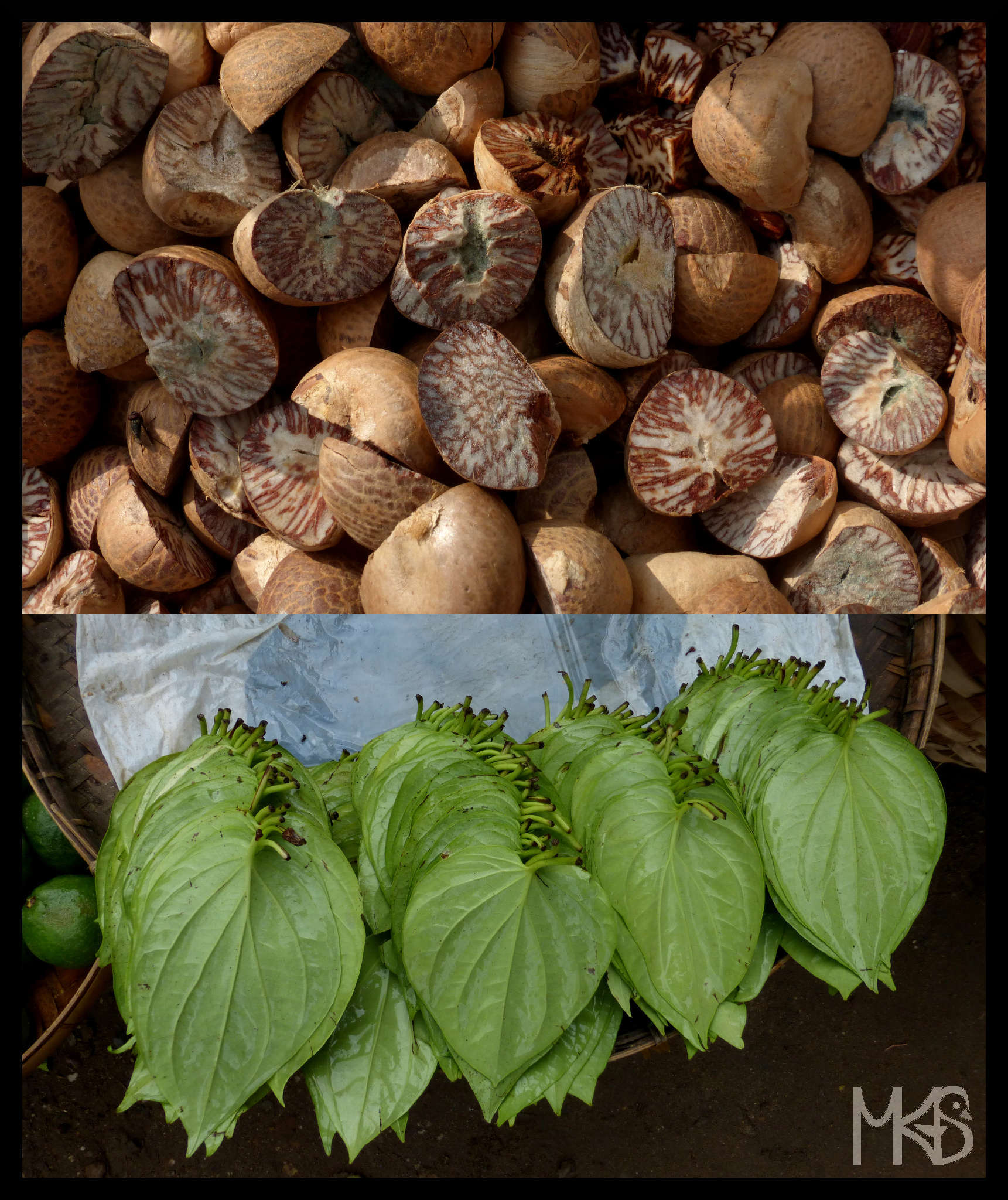
“Chewing betel” is very popular in Myanmar.
In today’s pictures you can see the main ingredients. But do you know what betel is? Betel nut (pan) comes from the betel palm and chewing it is apparently very similar to chewing coca leaves.
In Myanmar betel nuts are mixed with tobacco, some spices and limestone paste (calc).
What’s interesting, betel nuts turn the saliva’s color into red and people who chew betel have mouth, teeth and gums red or even black. This red saliva shouldn’t be swallowed so people spit it out very often what causes red spots on the streets (they are everywhere!).
People who chew betel often believe that it’s good for their teeth, but scientists found out it causes throat, mouth and esophageal cancers.
__________________________________________________________
Po odwiedzeniu Mjanmy, można odnieść wrażenie że prawie każdy mężczyzna żuje tam betel.
Podstawowe składniki widzicie na dzisiejszych zdjęciach, jednak czy wiecie co to jest?
Betel to nazwa rośliny, a jej żucie daje podobny efekt jak żucie liści koki.
W Mjanmie żuje się takie liście i orzechy palmy (na zdjęciu) połączone z różnymi dodatkami jak tytoń, przyprawy i obowiązkowo pasta wapienna.
Co ciekawe, żując betel, ślina zmienia kolor na intensywnie czerwony, a zęby i dziąsła z czasem czernieją i nie wyglądają zbyt estetycznie… Co więcej żując betel ludzie niszczą sobie zęby, a także zwiększają ryzyko raka jamy ustnej, gardła i przełyku. Takie fakty zostały potwierdzone naukowo, jednak ludzie w Mjanmie raczej wierzą, że betel pomaga im zachować zdrowie…
Jeszcze tylko dodam, że ta czerwona ślina nie powinna być połykana, więc w Mjanmie co chwilę ktoś pluje i ulice pokryte są wieloma czerwonymi plamami.
Hindusi też nagminnie żują. A najgorsze, że plują tą czerwoną śliną dookoła. 😛
tak, ble… 😉
Verry special and unknow for me
Thank you for reading! 🙂
Funny… and interesting 😉
Thank you! 🙂
We have it in Nepal too -but it’s more common in the South region that borders India. In hilly and mountainous regions of the country, it’s more of a delicacy to enjoy sometimes as dessert rather than a habit for most people.
that’s interesting, thank you!
Very interesting !! Thank you once more for all this background info!
Did you try it even once? It does not seem appealing to me but I am curious about its taste …
Thank you!
No, I didn’t try it, “black teeth” scared me 😉
I have heard of thus before, but never actually seen it, nor did I realise it was so harmful. Ugh!
exactly, ugh… 😉
Czyli na pierwszy rzut oka może się wydawać, że w Birmie panuje epidemia gruźlicy, a chorzy chodzą po ulicach i tam wypluwają sobie płuca… a to tylko narkotyki.
rewelacyjne podsumowanie! 🙂
Brrrrrr…better not to chew that then!
exactly! 🙂
Good lordy I don’t miss that stuff. I love the local color, but not so much when it’s bloody gums, and the time I stepped down from a bus in Yangon at 3:00 in the morning and right into a puddle of bloody betel spit…
Anyway. Great post! Sorry for the comment! 😉